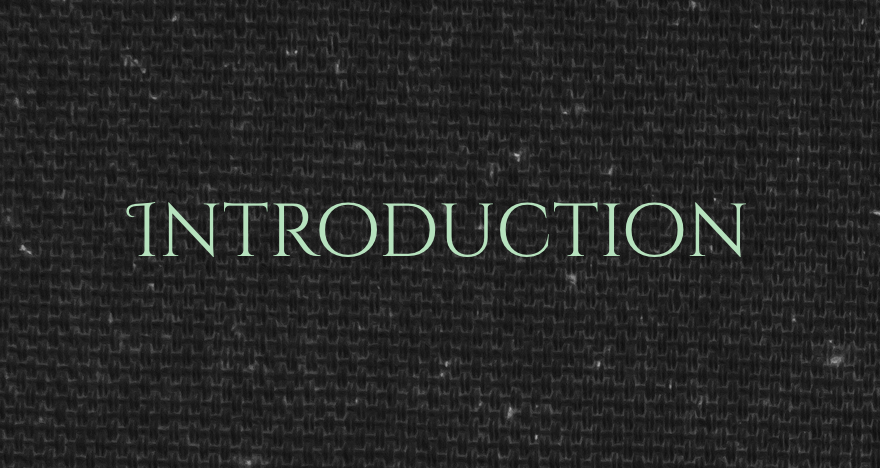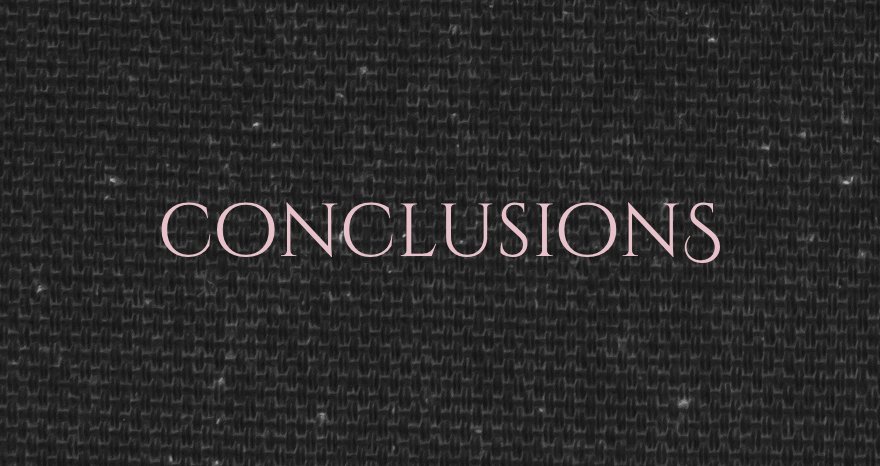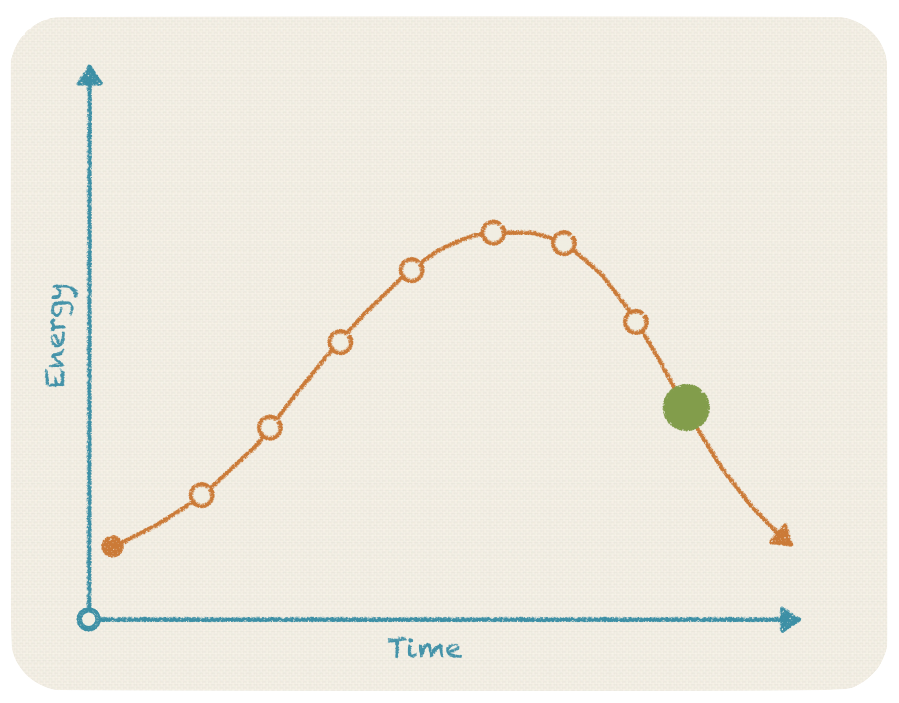The Magical Perspective
In Part I we have introduced the model of the Contact Cycle and shed some light on its relevance for practicing magicians. In Part II we explained its traditional application in a Gestalt context.
In this third part we will now apply the model of the Contact Cycle to a Ritual Magic perspective. How does it relate to the experiences we go through when engaging with spiritual entities? And how - if at all - can it support us in making these experiences and contact more whole and integrated into our everyday lives?
Here is a full overview of the model we will explore now:
Sensation
Every ritual preparation has a starting point. This phase represents the first spark of inspiration: If you go back and ask yourself why you undertook the last ritual that you performed what do you find? If it was a stand-alone rite what triggered it? If it was part of a ritual cycle or ongoing spirit contact what initiated it in the first place? Often the answer will be hard to tell. Not because it doesn’t exist but because our Western conscious has the tendency to focus on the future rather than the present or the past. While we are busy anticipating results and future next steps we forget to be aware about what triggered our actions in the first place. We turn things upside down and convince ourselves that it is the desire to achieve a certain future state that led to our current path and actions. But what initiated this desire? And why did we chose this scenario of our future over a million alternatives that would have been equally possible?
Every authentic magical act starts with a moment of inspiration. The phase of ‘Sensation’ represents this very moment that often goes unnoticed by our conscious mind - may it be pleasant or scary, desired or feared. Much more than a concrete thought at this early stage it will be a sensual experience we encounter.
Example: In a positive scenario this could be an encounter in a dream, an image during meditation, a sentence in an article that we browse, a voice that we hear on the street... An initial spark that flies into our mind. Only then a thought starts to form and we become ready to notice, to become aware. In a negative scenario - the most ancient of all magical motives - it would be a state of crisis that disrupts our state of being: an illness, a loss of resources, a threat of our current existence or the one of our loved ones.
Symbolization
In Part II we explained that the phase ‘Symbolization’ refers to the veiling of a direct sensual experience by an analogue experience we have made in the past. A pain in the stomach is attributed to hunger, our burning eyes are taken as a symptom of lack of sleep. How do we create these references and connections? Through socialization as well as our own learning and experience.
In Magick, however, the most ancient way of Symbolization isn’t through our own previous experiences but through myths. Rather than asking ‘When have I experienced a similar sensual impulse before and successfully made sense of it?’ the ancient magician would ask: ‘When has something similar happened to the gods and how did they make sense of it?’ So while we tend to relate sensual impressions to our own (or shared sociological) past, the magician relates them to a shared mythical past. The reference point - or language of symbols applied - changes from the personal to the spiritual or even divine level. Instead of Symbolization we could also call this stage a phase of mythological transference.
Example: This is how we have come to attribute hunger and ascesis to Saturn, fever and aggression to Mars, beauty and narcissism to Venus, alcoholism and wealth to Jupiter, etc. In most cases today we have forgotten the myths that created these relations in the first place. We tend to rely on compilations like the images of the Tarot, the 32th Paths of Wisdom or the Liber 777 to create spiritual reference points for our own actual experiences. What we have lost are the living stories behind these analogies, our own mythical past. The only way to recreate them is through our own magical explorations.
Mobilization
The next stage is the consequence of successfully creating a mythological transference: by relating our personal experience to a higher principle or divine body we create shared meaning between us and the spiritual world. Suddenly and veiled in its new symbolic form our sensual experience has become meaningful. It no longer is irritating and disturbing to our current state of being but pointing towards a new state that has been achieved by mythical ancestors or divine guardians before us.
The stage of Mobilization marks the point when the meaning of a symbol unlocks its resources to support our current situation: a new and disturbing experience turns into an element of a story that points to a better future. At this point the tables turn and we become active co-creators of the present situation.
Example: the sudden flash of energy the magician experiences when he identifies patterns of his current or aspired life to be analogue with a specific spiritual influence, e.g. identifying Venus as the force that can reduce a fever, Jupiter as the force that can help end periods of poverty or Saturn as the force to re-create focus and direction in life.
Action
What used to be a disturbance or a raw spark of inspiration has now become an impulse to act. We start to consider, chose and reject possibilities. We search for ritual approaches that have proven to be successful in similar situations of the past - either our own or the one of our magical tradition. We might rely on one of the ritual layouts we find e.g. in the Grimoires, in Merkavah mysticism, the Golden Dawn tradition or we might assemble our own approach and innovate.
Example: In this phase inspiration has turned into practical action. Now we can not only see the path to change, to leave the state of crisis behind, but we also see the next adjacent step ahead. We start walking the path. The Grimoires are a wonderful example of this stage: what they pass on to us are the instructions on how to perform specific actions. Rarely do they also bequeath a line about the ‘Why?’ and ‘What then?’ of the rituals they contain. Most often they are stripped down to the bare minimum of detailed ritual compilations. They are the pure grammar of the magical language we strive to speak. They don’t teach us how to create meaning from these words - but how to utter them once we found out what to call for ourselves.
Contact
Having healthily mobilized and acted we finally encounter full and vibrant contact. We are both witness to and actor in the dialogue we are co-creating. All other perceptions have faded into the background and we are fully present to engage in contact with the spirit entity in front of us. Change takes place and involves us fully. This is the moment of risk and surprise.
Example: Inspiration has turned into energy which again transformed into action. Now action is becoming experience: by means of the ritual we perform we are now in the depth of our inner realms, we are experiencing the presence and power of the entities we engage with, we are no longer reflecting internally but all our attention is captured in the present moment.
Satisfaction
Sometimes the moment of satisfaction is reached during the actual rite - and we banish the forces evoked. Often, however, they will continue to accompany us outside the temple and into our daily lives. In these cases the real adventure only begins once we have left the circle behind...
We have opened the door to a new spirit presence, we have made physical, astral and mental contact with an unfamiliar force of being and thus expanded the map of our consciousness. Now is the time to dose this force for it to be the potion we aimed to create and not to become the poison it can be. Now is the time to stay conscious while the new found spirit presence changes ourselves and our lives.
The challenge during this phase is to simultaneously be the object and agent of change. We have to be both inside and outside of the experiment that we are undertaking; co-creating and co-experiencing the change that we have brought upon us. The risk is to become completely absorbed in the new found contact and to lose perspective quickly. Every spirit we relate to or commune with only represents a fraction of the forces present in the reality around and within us. We need to zoom in on each of these forces to truly understand and engage with them; yet we also need to let go to open ourselves to new experiences when time has come. The ability to realize satisfaction, to be in touch with our ever evolving, ever changing inner needs is a rare skill among magicians. Some call it to know your True Will.
Example: I have shared the experiences I went through with the Olympic Spirit of OCH - from contact to satisfaction - in this blog post.
Integration
Once we realize satisfaction we bring the contact to an end. Another rite might be required to cut the cord between us and the spirit we engaged with over recent weeks or years. In many cases, however, conscious disengagement from the contact suffices... From the new found place we look back and for the first time see a holistic picture of the changes we went through. Having returned to our own spiritual centre we start to integrate the experiences made. How do they relate to similar earlier experiences? Did we encounter reassurance or confusion of existing beliefs? Was our life enriched or repeated? What is the echo and the aftertaste within us?
This phase can be called many names for there are many symbols for this often unconscious process: assimilation, digestion, reverberation, balancing or interpretation. In any case it is the mirror phase to Symbolization in every Contact Cycle. While in the first we draw on existing resources and experiences, in the latter we update and align our inner archives according to the ‘new material’ we encountered.
Example: So often this phase is completely missed in magic. Rather than looking back and integrating what we found we rush forward to engage in the next ritual... Why does this matter? Because we fail to keep the myths alive if we only repeat them, if we fail to integrate our own experiences into them, enriching them withpresent day first-hand encounters. In Ancient Egypt the myths were never finished or fixed in a final written form. They were a living, ever changing and evolving archive of collective spiritual experience. The same should be true for any ritual material that we leverage to engage with the spirits: truth can only be found in our own subjective experience. And many books should be re-written in our minds and memory once we brought them to life. What a sad journey if the starting point looked exactly the same once we returned from the other side?
Withdrawal
During the last phase of the Contact Cycle we end all direct or reflective engagement with the spirit contact we experienced. While echoes of the dialogue we have been involved in might still resound through our subconsciousness we withdraw from the experience consciously. Similar to the previous stage, often this state of the Contact Cycle is overlooked. Yet it forms an essential part of every full encounter: the return to a state of balance and non-contact. A state of inner freedom and non-engagement. We are present in the moment and no new undertaking has emerged into the foreground yet. All possibilities are quietly waiting in the background.
Example: These are the moments of freedom and being unbound by any particular experience or spiritual contact. These are the moments of self-centeredness and complete inner independency. Only if we allow ourselves to experience this phase of Withdrawal consciously - to exhale, to be present without desire, to realize the strength and power that is emerging from our own inner centre - can we engage in a new Contact Cycle selflessly again.
Selected Resources
- Buber, Martin, Ich und Du, 1923 (1919)
- Forrest, David, http://www.gestaltuk.com/indepth/contact-cycle
- Hartmann-Kottek, Lotte, Gestalttherapie, Springer Verlag 2008
- Perls, Fritz, Ego, Hunger and Aggression: A Revision of Freud's Theory and Method, 1942
- Zinker, Joseph, Creative Process in Gestalt Therapy, Vintage 1978















